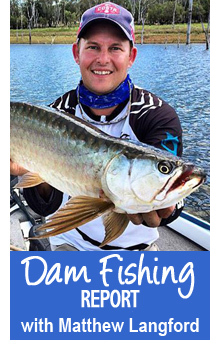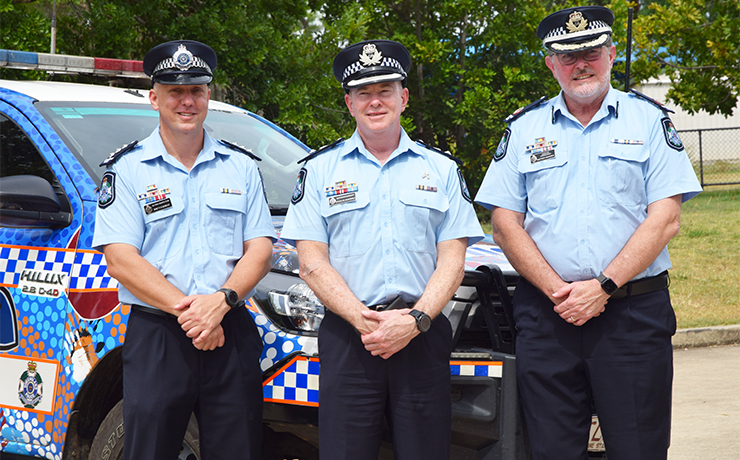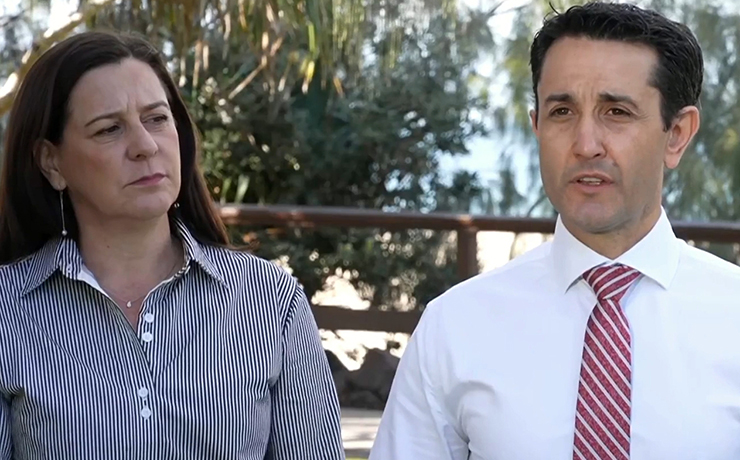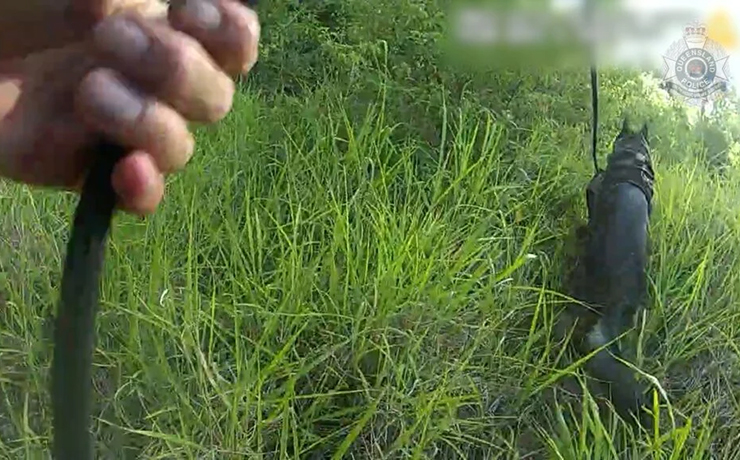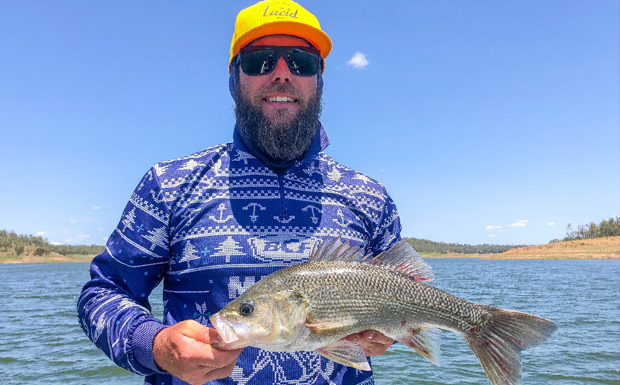
February 5, 2020
by Matthew Langford
The Christmas and New Year crowds have all but disappeared at the South Burnett dams but the fishing has remained fantastic.
Both Lake Boondooma and Bjelke-Petersen Dam are fishing well despite the low water levels.
Boondooma is producing some big quality Bass and Golden Perch and BP is producing big numbers of fish of various species.
If you’re thinking of coming for a fish, it’s hard to go wrong if you follow the report below.
* * *
Lake Boondooma
With the summer bite patterns continuing, it makes for some exciting fishing on Lake Boondooma, particularly later in the afternoons as the water temps really warm up.
Lately the trend has been to fish the timbers of the Boyne or Stuart arm early with 5/8 Bassman Spinnerbaits or Lipless Cranks in the morning. During the afternoon target the deeper sections of the dam up near the dam wall and rocky edges with ½ ounce rigged Ecogear Power Shads or Norries Wasabi Spoons or Spinnerbaits.
If I’m fishing Boondooma during the summer months, I’ll first start in the timber early of a morning as the fish are in among the trees, looking for an easy meal from passing Bonies.
The fish are holding very close to the structure in the arms. You’ll need to get your lures in as close as you can to get a bite. Look for spindly timber … trust me, there’s a lot of it!
Lures of choice for this scenario are 5/8 or 3/8 Bassman Spinnerbaits and any sinking Lipless Crank bait. Give your lure up to five seconds to sink down to 10-15 feet and start a slow wind.
It’s important to make sure that you have a lure retriever with you as you will get snagged on the trees occasionally, but if you’re getting snagged you know you’re in the thick of it.
Keep moving from tree to tree or structure to structure and persist as your lure WILL be eaten eventually by a hungry fish.
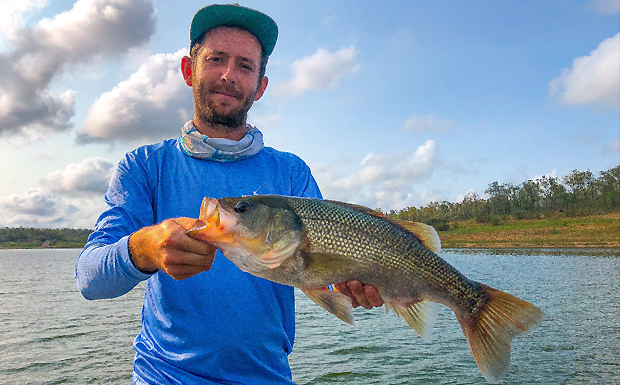
The fish in the afternoon tend to bite better in the open water when the water heats up.
I’ve found that the fish move deeper into the timber as the day progresses, and I find the fish in the deeper water are easier to target.
I’ll use my sounder to sound fish sitting in the optimal depth of 15 to 25 feet. When I’m happy that I’ve found a good concentration of fish, I will pull up and begin casting 3” to 4” soft plastics rigged with a ½ ounce head or 18gm Norries Wasabi Spoons.
With a big long cast over the areas that I’ve found the fish, I will let the jig head or spoon sink seven to 10 seconds and begin a slow retrieve back to the boat with a couple of twitches mixed in.
Continue this technique until you start to feel a few taps on the plastic or spoon.
When you feel a tap, it’s important to keep that slow wind going (without striking) until you feel weight on the line. Slowly lift the rod tip until you feel the weight of the fish. At this point the fish will know its hooked and make some great runs back down into the deeper water. Keep your drag fairly loose so that the hook doesn’t pull on the way back to the boat
Trollers are picking up some great Bass and Yellowbelly around the deeper sections of the dam, targeting suspended fish. Make sure to have plenty of deep diver lures handy. Lures that dive 15 to 20 feet will be the ones that get you on to consistent fish.
Bait fisherman are getting among a mixed bag of fish up in the timbered arms of the dam using worms and fresh shrimp.
It may even pay to move to the main basin and let your bait suspend under the boat in that 15 to 25 foot range. Drifting with the wind is a great way to cover water with your bait under the boat. Eventually it will cross paths with a hungry fish or two.
Redclaw numbers are also starting to pick up with some real big ones among them, so make sure you pack the opera houses if you’re coming out for a day or two.
* * *
Lake Barambah
If you’re keen on trolling, then I can suggest trolling lightly weighted Spinnerbaits, 3/8 blades or any deep diving hard body from boat ramp to boat ramp.
Early in the day, I’ve been casting soft plastics with a lot of success out in the open water of the dam. The bait is thick and high in the water column, so the Bass are sitting below them and coming up to feed.
I’ll use a ½ ounce jig head with a 3” soft plastic and cast over the open water. I’ll let it sink for three seconds then begin a reasonably fast wind. The Bass will tap at the lure so it’s important to remain patient and not strike until the fish has a firm grasp on the lure. This has been our most successful method of fishing of late.
When the sun is higher in the sky, I’ve found that the Bass move out on to the deeper flats.
Long casts, letting the plastic sink to the bottom and using a burn and kill retrieve is the key to getting the fish to hit the lure hard.
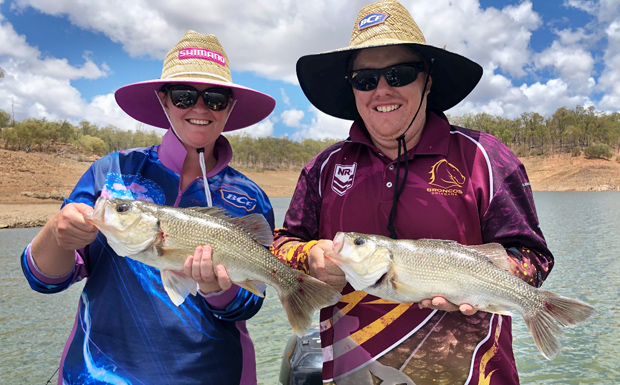
* * *
Fishing Charters
Don’t forget that you can book a fishing charter with me on BP and Boondooma dams and many other dams in Queensland.
If you’d like a great day out and all the info and knowledge to catch Bass, Yellowbelly or Saratoga in our great dams make sure you give me a call on 0408-658-592 and I’ll be happy to
take you out for a great day’s fishing. You can also check out our website
Until next time, tight lines and bent rods!
[Photos: Matthew Langford]
* * *
Boondoooma Yellowbelly
Don’t forget! The 2020 Boondooma Dam Family Fishing Competition is celebrating 30 years this weekend.
There is a bounty of cash and prizes to be given away including the major prize, a Bluefin 395 Drifter tinny with a 4-stroke Mercury 20hp motor and trailer, valued at $15,000, provided by Cunningham Marine Centre.
There’s also random lucky draws for non-fishers!
Nominations are $20 per adult and $5 per junior (18 years and under).
Registrations begin on Friday (February 7) at noon with a briefing at 8:00pm, or pre-register by email
This year, there’s a Gilled and Gutted section for Yellowbelly, Bass, Jew, Silver Perch and Spangled Perch.
There’s also a Catch and Release section for longest Yellowbelly, Bass, Jew, Silver Perch and Spangled Perch using the Track My Fish app.
For more information, call Zac Steinhardt on 0456-999-332






